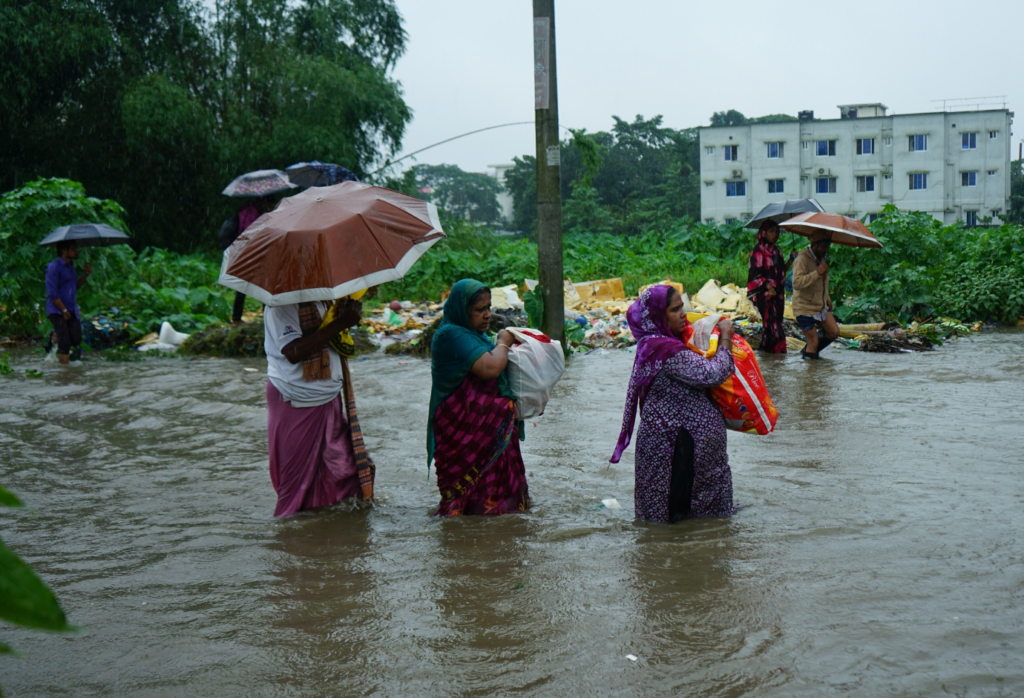The effects of climate change directly impact the rate of intimate partner violence, a new study from the UCL Institute for Global Health has found. The study, published in the journal PLOS Climate, found a strong link between certain climate shocks (including storms, landslides and floods) and higher instances of domestic violence.
Professor Jenevieve Mannell from UCL Institute for Global Health led the study which involved researchers from the University of Exeter, South African Medical Research Council, and the University of North Carolina at Chapel Hill. The team assessed intimate partner violence data from thousands of surveys conducted in 156 countries over 26 years, measuring the rate of physical and/or sexual violence within the past 12 months.
Researchers uncovered a strong link between climate change events and increased violence against women, though acknowledged that not all types of climate-related disasters demonstrated this link.
The aftermath of earthquakes and wildfires did not lead to higher rates of intimate partner violence. Researchers admitted they were not yet able to deduce reasons for these differing impacts, and encouraged more frequent data collection on the issue of intimate partner violence in the future.
Report author Professor Jenevieve Mannell said the research confirms previous studies that highlight similar findings.
“Existing evidence has found that when a woman experiences a climate-related event, she is more likely to experience violence in some countries and for some types of violence, but not others,” Professor Mannell said.
“We set out to explore what was happening at a national level to help inform international climate change policy.”
Professor Mannell identified a range of triggers that might be conducive to the increase of violence against women in the aftermath of climate change related disasters, including higher levels of stress, food insecurity, social services overload and insufficient and undersupplied disaster relief shelters.
These factors can all contribute to an environment where violence against women becomes likelier.
According to the report, the persistence and severity of violence against women are magnified in countries where patriarchal gender norms are rooted in society and violence against women is ignored.
The researchers noted the importance of establishing clear adaptation efforts post-disaster, and urged countries to include “violence against women” in their climate change commitments, citing Samoa and Fiji as examples as having already developed Climate Change Gender Action Plans.
“The Hidden Disaster” report from 2012 found that rates of domestic violence reported by police increased by 53 per cent in the aftermath of the Canterbury earthquake in New Zealand, while the rates of physical victimisation of women in the south of US almost doubled following Hurricane Katrina.
Women’s Agenda’s Climate Load report last year revealed additional domestic and family violence risks women faced following bushfire and flood crises in Australia.
After the Black Saturday Bushfires in 2009, the Women’s Health Goulburn North East conducted a study which revealed a significant spike in the number of community or domestic violence, including women who spoke of experiencing intimate partner violence for the first time. Another report found that women living in the worst affected bushfire regions reported experiencing intimate partner violence at seven times the rate of those in moderately or minimally affected communities.
In the aftermath of the 2019-20 bushfire crisis, Australian organisations reported spikes in domestic violence, including reports of women with AVOs against partners or former partners being forced to share spaces with them in emergency accommodation and evacuation shelters.
During the South East Queensland floods in early 2022, the Centre for Women & Co, based in Logan, reported an increase in incidents of violence, which followed a 12-15 per cent increase in calls for help that had occurred since the start of the global pandemic.
Anggia Anggraini, Gender Equality, Disability and Social Inclusion Lead with CARE Australia told the Climate Load report that violence against women tends to increase in the aftermath of a disaster, or during a bad agricultural season. According to Anggraini, women are also being hit especially hard by climate disasters when their voices are left out of decision-making processes.
CARE is mobilising its efforts in partnership with community NGOs across more than a hundred countries providing “workshops for men and boys that challenge harmful ideas about gender roles”.
These workshops offer critical prevention work, alongside advocating to “all levels of government for better services to prevent and respond to violence against women,” Anggraini said.


